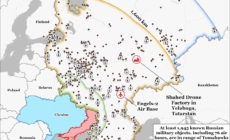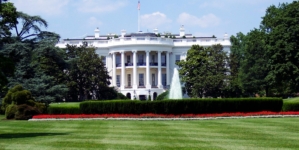-
Map shows where Russian targets could be destroyed with Tomahawk missiles - 8 mins ago
-
King Charles’ former butler reveals surprising royal protocol rules - 10 mins ago
-
Meta’s leaked AI documents expose internal child safety training rules - 22 mins ago
-
PM Sounds Alarm on Anti-Christian Forces, Celebrates Faith at Cathedral Reopening - 26 mins ago
-
Tom Brady’s LFG Player of the Game: Commanders RB Jacory Croskey-Merritt 🏆 Week 5 DIGITAL EXCLUSIVE - 37 mins ago
-
Donald Trump’s Osama Bin Laden Comments Raise Eyebrows - 48 mins ago
-
3% Fixed-Rate Loans Announced for Businesses - about 1 hour ago
-
How to detect and remove malware from your infected Mac computer safely - about 1 hour ago
-
NASCAR Playoff Rankings: Is Denny Hamlin the Driver to Beat Entering Round of 8? - about 1 hour ago
-
Major Match Reportedly Planned For WWE Crown Jewel - about 1 hour ago
Financial problems could force closure of one of Inyo County’s two hospitals
Inyo County, on the eastern side of the Sierra Nevada, has two hospitals. In a matter of weeks it may be down to one, local and state officials say.
Southern Inyo Healthcare District, a 37-bed hospital in Lone Pine, had eight days of cash on hand as of Sept.12, chief executive Dr. Kevin Flanigan told CalMatters. Local officials have sent a letter asking Gov. Gavin Newsom for an emergency $3 million to stabilize its finances through the end of the year, but absent state intervention the hospital may have to severely cut services and staff — or close altogether.
“If they don’t come through and nobody else comes through then… the board of directors is going to have some very hard decisions to make,” Flanigan said.
On average, hospitals generally have more than 200 days of cash on hand, according to a recent KFF analysis. Hospitals with fewer than 80 days of cash on hand are considered “highly vulnerable” to a “financial crisis.”
Located in Lone Pine, a town at the base of Mt. Whitney with just 1,300 residents, Southern Inyo Healthcare District is the only hospital within a nearly 60-mile radius. It’s the closest stop for injured hikers and dehydrated tourists visiting Whitney or nearby Death Valley, which regularly receives more than 1 million visitors per year. Without it there would be a 136-mile stretch between the next closest hospitals in the eastern Sierra Nevada.
The hospital’s financial distress comes as rural hospitals across the country face rising costs related to labor and supplies as well as projected future decreases in revenue from federal Medicaid cuts. Three weeks ago Glenn Medical Center, the only hospital in Glenn County in Northern California, said it would shut down by October.
Assemblymember David Tangipa (R-Fresno), state Sen. Marie Alvarado-Gil (R-Jackson), and Inyo County supervisors said in the letter to Newsom that the hospital faces a short-term deficit and a one-time infusion from the state would be enough to stabilize the facility long term.
“If doors close, thousands of elderly and rural Californians will be left without access to critical healthcare, creating a true medical desert in another region of the state,” the letter says.
Sami Gallegos, a spokesperson for the California Health and Human Services agency, said in a statement that the administration is working with Southern Inyo Healthcare District to expedite payments due to the hospital “where possible.”
“Our top priority is to ensure Californians in all areas of the state have access to quality, equitable health care,” Gallegos said.
She did not address whether the administration would be able to give the hospital the emergency infusion of cash it has requested.
During a board meeting Tuesday, Flanigan said the hospital has about $2 million in unpaid bills. Since asking the state for help, the hospital has received about $11,000 in payment owed for medical services.
“It’s small stuff, but important,” he said. “It’s helping us make payroll.”
Will Wadelton, the county supervisor for the area that encompasses the hospital, said the county doesn’t have the money to bail the hospital out.
“We are pursuing all other options to keep the hospital solvent,” Wadelton said, including soliciting donations and hoping for state intervention.
It’s unclear how lawmakers could appropriate money to the hospital quickly. Local officials requested emergency funding on the last regular day of the legislative session, meaning the state’s checkbook can’t be adjusted until lawmakers reconvene in January.
Flanigan said he is still hopeful the hospital will find a solution.
Flanigan, who started the job as CEO just four weeks ago, said the hospital’s dire financial straits had been masked by leftover money from the COVID-19 pandemic. At the time the federal government pumped billions of dollars into healthcare to help keep hospitals and other facilities afloat while costs rose and other revenue sources declined. State agencies received more than $109 billion in 2021 to support health services while counties and cities got additional money to assist with local response.
Flanigan said emergency funding from the state would give him time to reduce operating costs to a sustainable level and allow the facility to access additional revenue expected in January that would sustain the hospital in the long term.
“With this funding I would be able to adjust the operations of the hospital without being disruptive and have the highest probability of success,” Flanigan said.
Money from the $50-billion rural health fund included in the Republican “One Big Beautiful Bill Act” to placate conservative lawmakers from rural states would not be available soon enough to help Southern Inyo Healthcare District, he said.
In Northern California, Glenn Medical’s financial difficulties began when the U.S. Centers for Medicare and Medicaid Services stripped it of its “critical access” status — a special designation given to qualifying rural hospitals — causing it to lose 40% of its revenue.
Southern Inyo Healthcare District is also a critical access hospital.
“It’s of utmost importance to us to not let another rural hospital close,” said Austin Gilbert, a spokesperson for Tangipa’s office.
Hwang writes for CalMatters, where the report originally appeared.
Source link






























